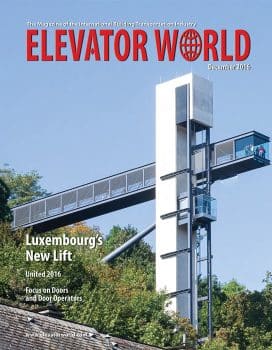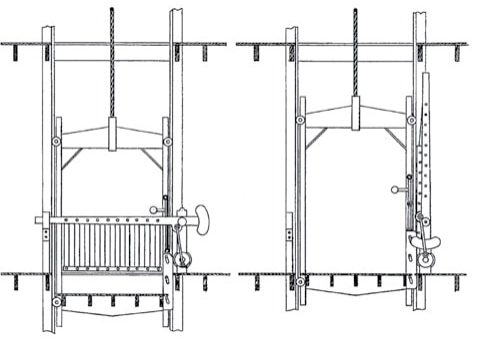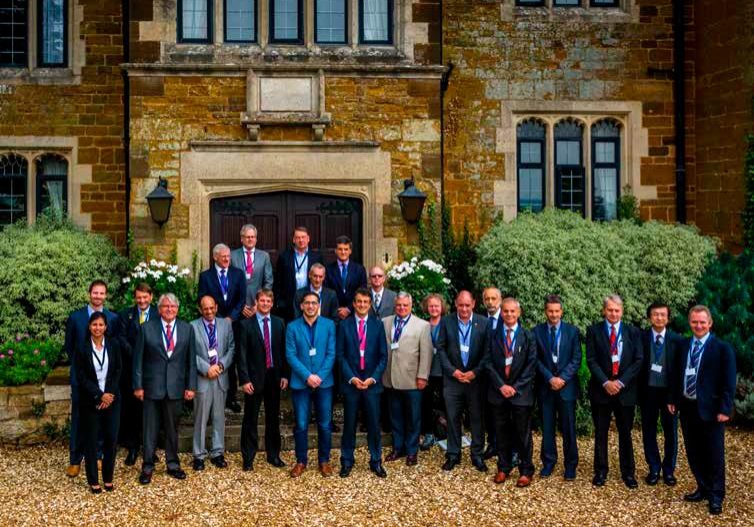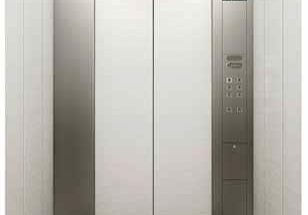The Quintessential Art Deco Object
Dec 1, 2016
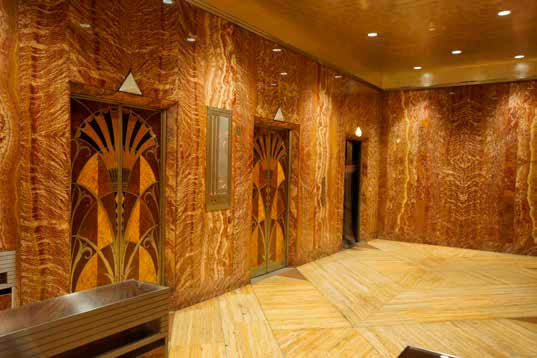
In this Readers Platform, your author explores the lush designs of elevator doors that reflect the iconic NYC buildings in which they reside.
As a style, Art Deco is recognizable by its lavish ornamentation, use of precious materials, and the flora of various Edens painted, carved, molded or stamped alongside the bold lines and angles of an industrial society. Art Deco was our last period of extreme ornamentation, and the most famous Art Deco objects in the world — the Empire State and Chrysler buildings in New York City (NYC) — illustrate it, from their cornerstones to spiny metal tops, and in their lobbies, halls and elevators.
Whether it is the façade, lobby, elevator interior or elevator door, the Empire State Building shows a continuous design aesthetic at each level. Design elements such as imposing stone and jagged metal and a color scheme of black, gray and silver work together to evoke the machine age, and the genius of standardization and systematization that guided the construction of the building in just 410 days, 12 days ahead of schedule.
The setbacks of the building, mandated by the NYC Zoning Resolution of 1916, are abstracted on the elevator doors. Many NYC skyscrapers used setbacks to abide by the resolution, but somehow the Empire State Building alone has colonized the setback silhouette as a visual signature that encompasses its façade, lobby, elevator interiors and doors.
Today, the elevator doors of the Empire State Building cannot be seen for free. To even approach the elevator doors through the grand lobby, you must pay a fee to ride to the viewing platform at the top of the building. To enter through the lobby that reaches the offices, you must work in the building or have official business there. The only elevator available to the public to view for free is a small passenger elevator that, as an alternative to the escalator, transports tourists from the grand lobby to the second floor, where they join the line to reach the top.
This small unit has unornamented metal doors. Inside is a marble veneer, gray with black vertical lines, and a black silhouette on one wall of the building’s shape, echoing the more-or-less abstracted silhouettes on the doors and interiors of other elevators in the building, and the large figure on the lobby wall surrounded by bolts of light.
Unlike the Empire State Building, the Chrysler Building has some jarring discontinuities in design that can be set up as a series of parallel binaries:
- Outside/inside
- Bright/dark
- Steel/wood
- Machines/flowers
- Engineering/craft
- Advanced/primitive
- New/ancient
- Automobile/elevator
The exterior is clad in a stainless-steel cap. Steel doors and accents dominate the massive entry. On the side of the building, architect William Van Alen used steel to evoke the chrome hubcaps of a 1929 Chrysler, its eagle hood ornament and the 1929-model winged radiator cap. Patterned brickwork draws lines, vees and boxes among the windows, and entire vehicles are depicted in colored brick, rolling up next to the radiator-cap ornaments, with real Nirosta steel hubcaps attached to the façade at the center of each brickwork auto’s wheel. The façade of the Chrysler Building is a celebration of industrial beauty and corporate power — the freedom and future automotive manufacturing promised America.
Unlike the light brick and metal of the façade, the lobby walls of the Chrysler Building are a warmer, heavily veined pinkish-brown marble/sienna travertine imported from Germany. There are some steel highlights — doors, and door and window frames — but the inside feels dark and intimate, rooted in tradition and the Old World in its use of classical materials.
The elevator interiors are wood veneer inlaid with patterns. Some interiors are dominated by geometric forms of straight lines and angles; others are more curvilinear. Each lobby elevator door is surfaced with wood veneer arranged in the shape of a large, stylized papyrus plant, a common motif in ancient Egypt. Architect Van Alen and the Tyler Co., the subcontractor that provided the metal wood (a material consisting of a sheet of metal glued between two veneers or of a veneer glued between two sheets of metal) used a large variety of wood — Japanese ash, English gray hardwood, Oriental walnut, American walnut, satinwood, Cuban plum pudding wood and curly maple, among others — that leaned toward darker oranges and browns.
The doors could even be seen as faux African, like the plate for African-American abolitionist and women’s rights activist Sojourner Truth designed by artist Judy Chicago for her art installation “The Dinner Party.” Modern building materials are celebrated on the façade of the Chrysler Building, but inside, they are covered with traditional-seeming materials shaped and fitted together by the hands of craftsmen.
The auto motif on the outside is abandoned on the inside, and elevators are adorned with somewhat more organic, less mechanical shapes and colors. In its series of parallel binaries, the Chrysler Building puts cars with the future and elevators in the same category as old things that do not go fast — the ancient world, real and imagined African civilizations, craftsmanship, flowers and wood, lush vegetation.
Go look at the Chrysler Building for yourself, and while you are in town, go see the elevator doors on the Empire State, the Film Center, The Fred French, and, especially, the Chanin buildings. The latter sits on the opposite corner of Lexington Avenue and 42nd Street from the Chrysler Building. Artist Pamela Lawton, whose most famous work depicts reflections in the glass façades of more modern NYC skyscrapers, is also a fan of the Chanin Building. Lawton writes:
“Swirling Art Deco patterns cascade around me entering the elevator, a vertiginous trip to floating floors. Defying gravity and earth-bound materials celebrate the disequilibrium of our city. To me, the flying geese on the elevator doors in the Chanin Building are a meshing of air and iron true to my experience of skyscraper views in general.”
If a building does not count as an object, I would name a Chrysler elevator lobby door as my quintessential Art Deco object. It is quintessential because it holds some less-remembered traditions of Art Deco — floral design, use of wood, African influence — in tension with the style’s more famous tendency to bold abstraction, steel and futuristic design (which are seen in touches around the lobby and in full force on the building’s façade). It is also quintessential because when someone first installed it, an operator had to open and close it and the gate by hand for each trip — the everyday engagement of worker with machine made visible in Art Deco that has disappeared in our automated, self-service, touchpad society. And, it is quintessential because it sits right on that artificial border between art and design that Art Deco erased.
Get more of Elevator World. Sign up for our free e-newsletter.

